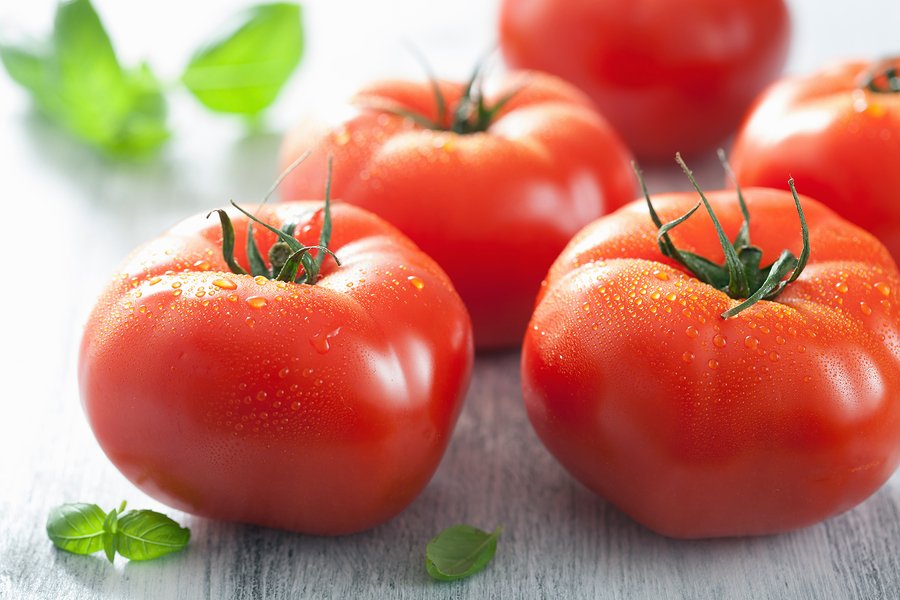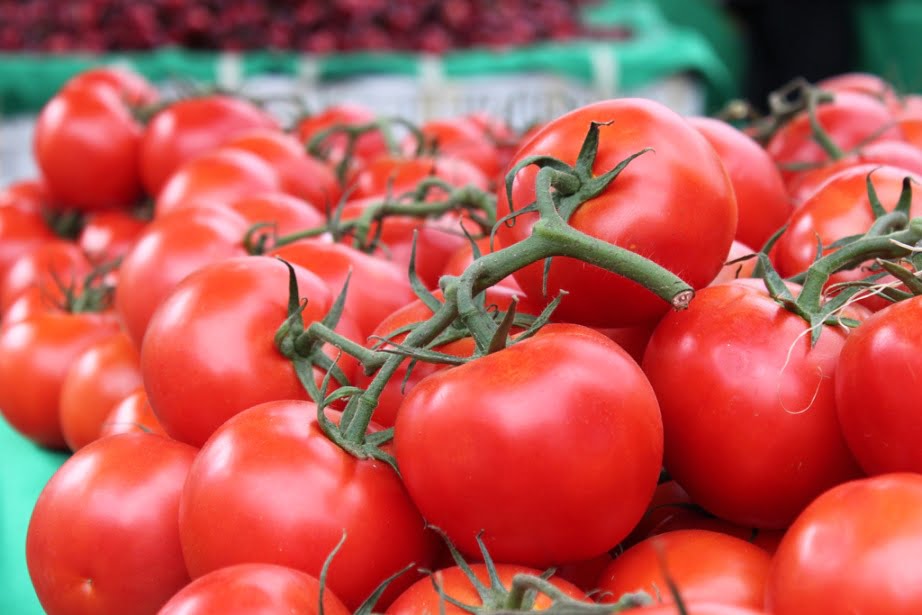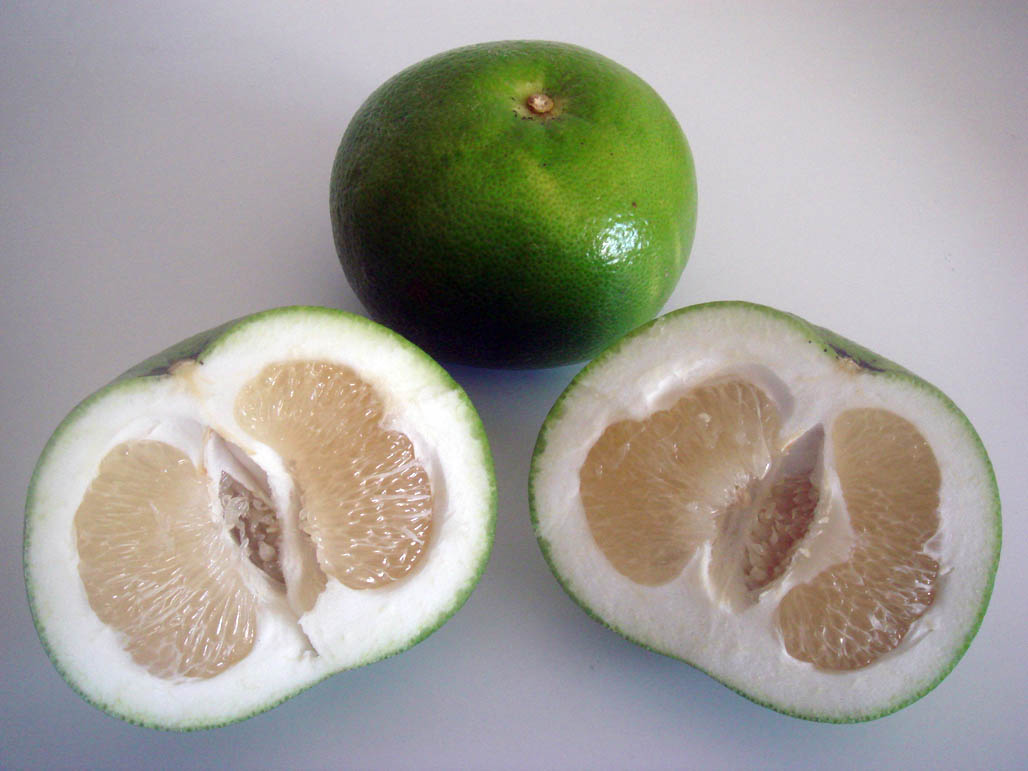From grape tomatoes to chickpeas that don’t cause flatulence, a range of vegetables and fruits never seen – or tasted – before were developed by Israeli scientists and farmers in recent years. Whether it’s a sweeter strawberry, basil with longer shelf life, nano-watermelon or the combination of grapefruit and pomelo called pomelit, Israeli fruit hybrids are taking the world by storm.
The purposes of modifying fruits and vegetables are many: changing their shapes so they can be packaged better or become finger food at parties, prolonging their shelf life, so they can be exported from Israel to markets worldwide, or combining their traits, so that the consumer will enjoy the best of all worlds. Some of these modern fruits and vegetables have become a hit in Europe, Israel’s main agricultural market.
SEE ALSO: Buy Your Food Straight From The Local Farmers With Farmigo
Annually, Israeli agricultural exports top $3.8 billion, of them $1.4 billion in fresh fruits, and vegetables, according the Israeli Ministry of Agriculture and Rural Development. Israel exports roughly $1 billion worth of fresh fruits and vegetables a year to the European Union, which is by far its largest market, followed by Russia ($227 million) and the US ($78 million).
The new frontier in fresh fruit and veg
Contrary to popular belief, Israel – which is famous for its Jaffa oranges – exports more fresh vegetables than citrus fruits to the world: $530.5 million worth of vegetables vs. $187.3 million worth of citrus fruits were exported last year. Non-citrus fruits exported from Israel account for $309 million, followed by $180 million worth of flowers, $148 million worth of seeds and some $38 million in cotton. Fresh meat exports are valued at $40 million a year.
Most Israeli strains are a product of Israeli research. Much of the Israeli research on fruits and vegetables takes place at the Volcani Center’s Agricultural Research Organization (ARO) and at the Hebrew University Faculty of Agriculture, Food and Environment. The research focuses on improving the crops and produce. However, “what interests buyers the most are: shelf life, shape and resistance to foodborne illnesses and other diseases,” Prof. Nativ Dudai, head of the Medicinal and Aromatic Plants Unit at ARO, tells NoCamels. “Aroma and flavor are less important, unfortunately, although I personally am adamant about fresh herbs’ aroma and taste.”
Over the past several decades, aroma and flavor have eroded, and “the scientists are being blamed for not dealing with that,” he says. “The problem is that most scientists work for farmers, growers and governments, and they have limited budgets. I’ve been evangelizing flavor and aroma for 15 years and usually people chuckle when I talk.”
That’s because the market couldn’t care less, Dudai says. “Buyers don’t often complain about flavor and aroma, they care about pesticides, shelf life and shape.” However, “ugly fruits and vegetables often have the same or even better qualities than those with nicer shapes,” he observes.
Dudai and his team are currently working on fresh basil, oregano and rosemary strains that are resistant to diseases and grow year-round, mainly for the European markets. “But we still emphasize aroma, flavor, antioxidants and additional health benefits,” he exclaims.
The ARO team combines two strains of oregano to perfect its taste and shelf life, through the process of plant breeding. “If I take oregano grown in Israel and oregano from Europe, their offspring might have better qualities. It’s similar to a child who’s taller than his parents,” Dudai explains. “As a result, our new, fresh oregano hybrid (a cross between the biblical Hyssop, or Za’atar, and the European oregano) doesn’t go brown over time. It’s the new frontier in fresh herbs.”
According to an ARO report, exports of herbs top $2 billion a year. But there’s more to Israeli food hybrids than herbs. In recent years, a host of new produce strains and hybrids – which have a better taste, fewer seeds, or different shapes and colors – were introduced to global markets.
Sign up for our free weekly newsletter
SubscribeDr. Pepper and Prof. Tomato
Grape tomatoes, which look a lot like a cluster of grapes, were developed in recent years by Prof. Haim Rabinowitch and his research team at the Hebrew University. Grape tomatoes have become so popular, that they now account for nearly 10 percent of all tomatoes marketed in Europe. Rabinowitch, who along with colleague Prof. Nachum Kedar, also perfected the cherry tomato in the 90s (by significantly increasing its shelf life), is considered a tomato guru both in Israel and abroad.
Rabinowitch attributes the global success of Israeli produce strains to two factors: Israelis’ abilities to grow a range of fruits and vegetables year-round in arid areas; and its technologically advanced agricultural research.
“In most areas of Israel, climate conditions are desert-like and farmers use water from the sea for irrigation, which improves the flavor of fruits and vegetables,” Rabinowitch tells NoCamels. “In Israel, we enjoy local fruits and vegetables year-round, without having to import. That’s because we’ve learned to use our various climates – from the arid Negev Desert, through the Dead Sea area which is virtually tropical, to our California-like coastline, all the way to the Galilee mountains. There’s no other small country in the world that maximizes the use of its natural resources like Israel.”
SEE ALSO: Genetically Modified Plants To Resist Intense Drought
As for the local agricultural research, Rabinowitch says there’s much room for creativity in designing new strains, despite the limited budgets. In his opinion, some of the greatest Israeli developments in this field are seedless cucumbers, seedless personal watermelons (“which have become a hit in the US”), Pomelit (grapefruit-pomelo hybrid), and the new Orr clementine, “which is small, sweet, easy to peel and is very popular around the world now,” Rabinowitch says.
But vegetable hybrids are not only easier to consume, they also have health benefits. Take for example the chocolate-colored pepper, one of the newest strains developed by the Dr. Yonatan Elkind, whom we fondly dub the Israeli “Dr. Pepper.” Elkind, a professor at the Hebrew University, has been on the forefront of pepper research, and his latest hybrid, developed with Kibbutz Ein Yahav’s farmers, combines all the good of both green and red peppers grown in Israel.
When the pepper is ripe and turns from green to red, its chlorophyll (green pigment) becomes carotenoid (natural red pigment). In the hybrid pepper, both coexist, thus preserving the nutrients and vitamins of the carotenoid (some of which help fight cancer) and the anti-bacterial and antifungal properties of the chlorophyll. So why eat green and red peppers separately, when you can have the two-in-one experience?
What’s the next step for Israeli research? Perhaps square-shaped tomatoes? “Israelis have already grown square tomatoes, which are easier to package and ship,” Rabinowitch says. “But at the end of the day, people want round tomatoes.”
Photos: John Tornow, Maya83, Amanda Slater, Yot, Ionutzmovie
Video courtesy of Volcani Center
Related posts

Resilient And Nutritious New Plant-Based Milk Aims To Make A Splash

Chocolate From Cultivated Cocoa Comes Without Environmental Toll

Plastic Fantastic: Startup Takes PVC Back To Its Crude Oil Roots








Facebook comments